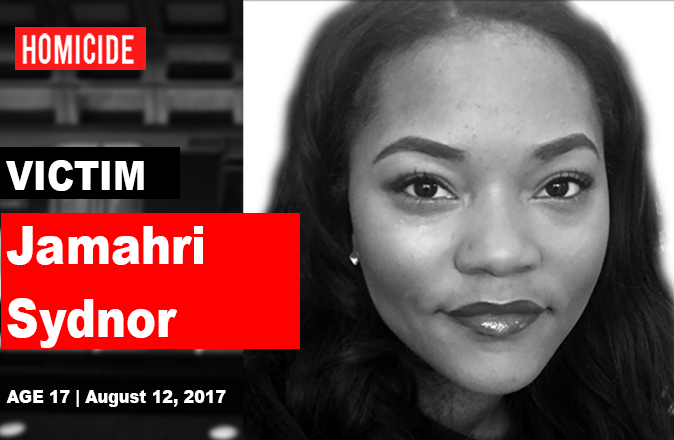
Thank you for reading D.C. Witness. Help us continue our mission into 2024.
Donate NowBy
D.C. Witness Staff
- October 25, 2022
Court
|
Daily Stories
|
Homicides
|
Non-Fatal Shooting
|
Shooting
|
Suspects
|
Victims
|
In an Oct. 24 jury trial, the defense challenged an eyewitness on his initial description of a defendant, and an expert witness relayed statistical findings that weakly linked a sweatshirt to the defendant’s DNA.
On Aug. 10, 2017, Robert Moses, 23 and James Mayfield, 22, allegedly approached the intersection of Montana and Saratoga Avenues, NE while armed with .40 and .45 caliber handguns. Collectively, the defendants allegedly fired over ten rounds at people standing on Saratoga Avenue. One of the bullets struck 17-year-old Jamahri Sydnor in the head as she was driving, killing her. Three other bystanders were also struck and injured by stray bullets.
Moses was arrested on Aug. 10, 2017, while Mayfield was arrested on Dec. 28, 2017. The defendants are charged with more than a dozen counts each, including first-degree murder while armed, assault with the intent to kill and possession of a firearm during a crime of violence.
Before the jury was called, Mayfield’s defense attorney Veronice Holt introduced a motion to postpone a witness’ testimony, that was scheduled in afternoon, during which the prosecution planned to present a very small sweatshirt worn by Mayfield when he was arrested in December of 2017.
Holt said the prosecution intended to highlight Mayfield’s skinny frame, which matched a characterization put forth by a witness to the Aug. 10 shootings.
However, she said this description was inconsistent with Mayfield’s appearance when Sydnor was murdered in August 2017. By the time he was arrested, Mayfield had suffered from a medical illness that rendered him hospitalized for two months and caused him to lose substantial weight.
Holt added that the prosecution failed to give her advanced notice about their plans to present the sweatshirt, only introducing it to her after the trial had already begun. She asked that the witness’ testimony be delayed to give her time to construct an argument in response.
Holt maintained that calling attention to Mayfield’s small and dirty clothing, which she described as “something a homeless person would wear,” would unnecessarily embarrass him in front of the jury,
Prosecutors assured defense counsel that the sweatshirt would only be used to help the jury visualize Mayfield’s body size at the time and that no references would be made to its cleanliness nor Mayfield’s housing status.
DC Superior Court Judge Maribeth Raffinan denied the defense’s motion to postpone the testimony, concluding that evidence of Mayfield’s weight loss was not prejudicial to him as the defense would have the opportunity to contextualize Mayfield’s weight loss during their cross-examination.
An eyewitness, who saw someone shooting toward Saratoga Ave while he was driving on Aug. 10, 2017, described the shooter as having shoulder-length dreadlocks and wearing a purple patterned sweatshirt and a ski mask pulled up to his nose.
In her cross-examination, Holt referenced notes taken by the detective he spoke to, which did not include any mentions of the suspect’s hair. Still, the witness maintained that he did in fact mention the shooter’s hair in his initial account.
The defense called an expert witness in DNA and serology.
The expert conducted a thorough review on the forensic reports conducted by a different expert, using a computer software designed to analyze DNA.
The software was specifically designed to disentangle complex DNA samples involving multiple potential people, and report how likely it was that each person’s DNA contributed to the sample.
According to the expert, when analyses were initially run on the sweatshirt described by the witness, the software determined that Mayfield likely contributed to 8 percent of the DNA. It also found that a different individual accounted for 86 percent of the DNA on the sweatshirt’s interior.
The expert witness is set to continue with their testimony during trial on Oct. 25.
Follow this case